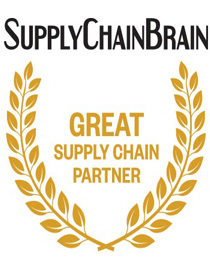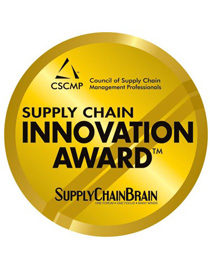- LOGISTICS
- TECHNOLOGY
- All Technology
- Artificial Intelligence
- Cloud & On-Demand Systems
- Data Management (Big Data/IoT/Blockchain)
- ERP & Enterprise Systems
- Forecasting & Demand Planning
- Global Trade Management
- Inventory Planning/ Optimization
- Product Lifecycle Management
- Robotics
- Sales & Operations Planning
- SC Finance & Revenue Management
- SC Planning & Optimization
- Supply Chain Visibility
- Transportation Management
- GENERAL SCM
- Business Strategy Alignment
- Customer Relationship Management
- Education & Professional Development
- Global Supply Chain Management
- Global Trade & Economics
- Green Energy
- HR & Labor Management
- Quality & Metrics
- Regulation & Compliance
- Sourcing/Procurement/SRM
- SC Security & Risk Mgmt
- Supply Chains in Crisis
- Sustainability & Corporate Social Responsibility
- WAREHOUSING
- INDUSTRIES
- THINK TANK
- WEBINARS
- PODCASTS
- WHITEPAPERS
- VIDEOS
-

Watch: Paccurate Presents Analytics Tool PacHealth
-

Watch: Changes and Innovation in the Tobacco Supply Chain
-
 SUPPLY CHAIN THOUGHT LEADERS
SUPPLY CHAIN THOUGHT LEADERSWatch: What’s Going on With M&A in the Supply Chain?
-

Watch: A Shipper of Critical Medical Supplies Consolidates IT Systems
-

Watch: Supply Chain Vision From an Industry Veteran
-

Watch: Cross-functional Dependencies of Last-Mile Delivery
Feature Stories
-

-

-

-
 SCB FEATURE
SCB FEATUREWarehouse Worker Shortage? Get Flexible
Think Tank
More in Think TankTechnology
Logistics
Podcasts
-
THE SUPPLYCHAINBRAIN PODCAST
Podcast | An NBA Legend Shoots for ‘Coffee With a Cause’
-
THE SUPPLYCHAINBRAIN PODCAST
Podcast | Why Technology Will Kill Physical Retail Sooner Than You Think
-
THE SUPPLYCHAINBRAIN PODCAST
Podcast | Why Manufacturing Lags in Protecting Against Cyberattacks
-
THE SUPPLYCHAINBRAIN PODCAST
Podcast | Your Yard Robots Are ‘Imperfect’? That’s Good Enough
Videos
-

-

-
 SUPPLY CHAIN THOUGHT LEADERS
SUPPLY CHAIN THOUGHT LEADERSWatch: What’s Going on With M&A in the Supply Chain?
-

Webinars
-

Modernizing the Mile: US Foods Builds a Smarter Future for Daily Planning
May 29 2025 -

Unmatched Flexibility. Unlimited Throughput: Maximize Productivity with Flexible Automation
April 24, 2025 -

Implications of AI on Procurement in 2025
ON-DEMAND WEBINAR -

How to Elevate Your Container Drayage Operations to Maximize Profit and Growth
ON-DEMAND WEBINAR
Subscribe to our Daily Newsletter!
Timely, incisive articles delivered directly to your inbox.
- LOGISTICS
- TECHNOLOGY
- All Technology
- Artificial Intelligence
- Cloud & On-Demand Systems
- Data Management (Big Data/IoT/Blockchain)
- ERP & Enterprise Systems
- Forecasting & Demand Planning
- Global Trade Management
- Inventory Planning/ Optimization
- Product Lifecycle Management
- Robotics
- Sales & Operations Planning
- SC Finance & Revenue Management
- SC Planning & Optimization
- Supply Chain Visibility
- Transportation Management
- GENERAL SCM
- Business Strategy Alignment
- Customer Relationship Management
- Education & Professional Development
- Global Supply Chain Management
- Global Trade & Economics
- Green Energy
- HR & Labor Management
- Quality & Metrics
- Regulation & Compliance
- Sourcing/Procurement/SRM
- SC Security & Risk Mgmt
- Supply Chains in Crisis
- Sustainability & Corporate Social Responsibility
- WAREHOUSING
- INDUSTRIES
- THINK TANK
- WEBINARS
- PODCASTS
- WHITEPAPERS
- VIDEOS













.jpg?crop=1&height=262&t=1741662097&width=370)










